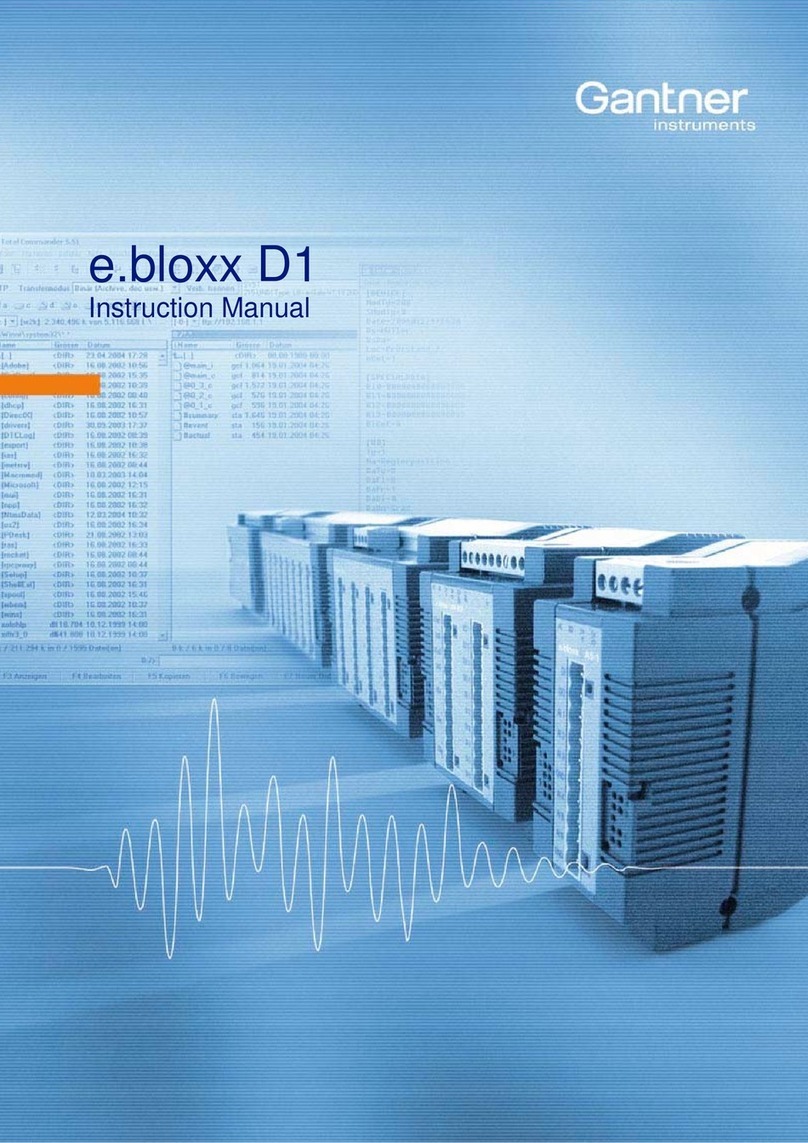
Vers. No. 6.1
4Released: 25/04/2017
4.4.4 Using the RS-232 interface of Q.gate or Q.pac ................... 35
4.4.5 Connecting modules directly to a PC/PLC ........................... 36
4.5 Synchronization of several systems..................................... 38
4.5.1 Connection of a radio receiver for time signals................... 41
4.5.2 Connection of a GPS receiver .............................................. 41
4.6 Module flashing frequency .................................................. 42
4.6.1 SOS, configuration error ..................................................... 42
4.6.2 Firmware download ............................................................. 42
4.6.3 Activating the firmware download....................................... 42
4.6.4 Problems during data transmission ..................................... 43
4.6.5 LED displays in normal operation........................................ 43
4.7 The modules and their connection options.......................... 44
4.8 Q.bloxx A101: Connecting sensors and I/O.......................... 46
4.8.1 Voltage................................................................................. 46
4.8.2 Current ................................................................................ 47
4.8.3 Potentiometer ...................................................................... 47
4.8.4 Resistance, Pt100, Pt1000 ................................................... 47
4.8.5 Thermocouple ...................................................................... 48
4.8.6 Full and half-bridge transducers ......................................... 48
4.8.7 Strain-gauge quarter bridges .............................................. 49
4.8.8 IEPE/ICP®sensor ................................................................ 49
4.8.9 Digital input and output....................................................... 50
4.9 Q.bloxx A102: Connecting sensors and I/O.......................... 51
4.9.1 Voltage................................................................................. 51
4.9.2 Current ................................................................................ 52
4.9.3 Full and half-bridge transducers ......................................... 52
4.9.4 Strain-gauge quarter bridges .............................................. 53
4.9.5 IEPE/ICP®sensor ................................................................ 53
4.9.6 Analog output ...................................................................... 53
4.9.7 Digital input and output....................................................... 54
4.10 Q.bloxx A103: Connecting sensors and I/O.......................... 55
4.10.1 Voltage................................................................................. 55
4.10.2 Current ................................................................................ 56
4.10.3 Digital input and output....................................................... 56
4.11 Q.bloxx A104: Connecting sensors ...................................... 57
4.11.1 Voltage................................................................................. 57
4.11.2 Thermocouple ...................................................................... 58
4.12 Q.bloxx A105: Connecting sensors ...................................... 59
4.12.1 Resistance, Pt100, Pt1000 ................................................... 59
4.13 Q.bloxx A106: Connecting sensors and I/O.......................... 61
4.13.1 Full and half-bridge transducers ......................................... 61
4.13.2 Strain-gauge quarter bridge................................................ 62
4.13.3 Inductive full and half bridges............................................. 62
4.13.4 LVDT, RVDT......................................................................... 63





























